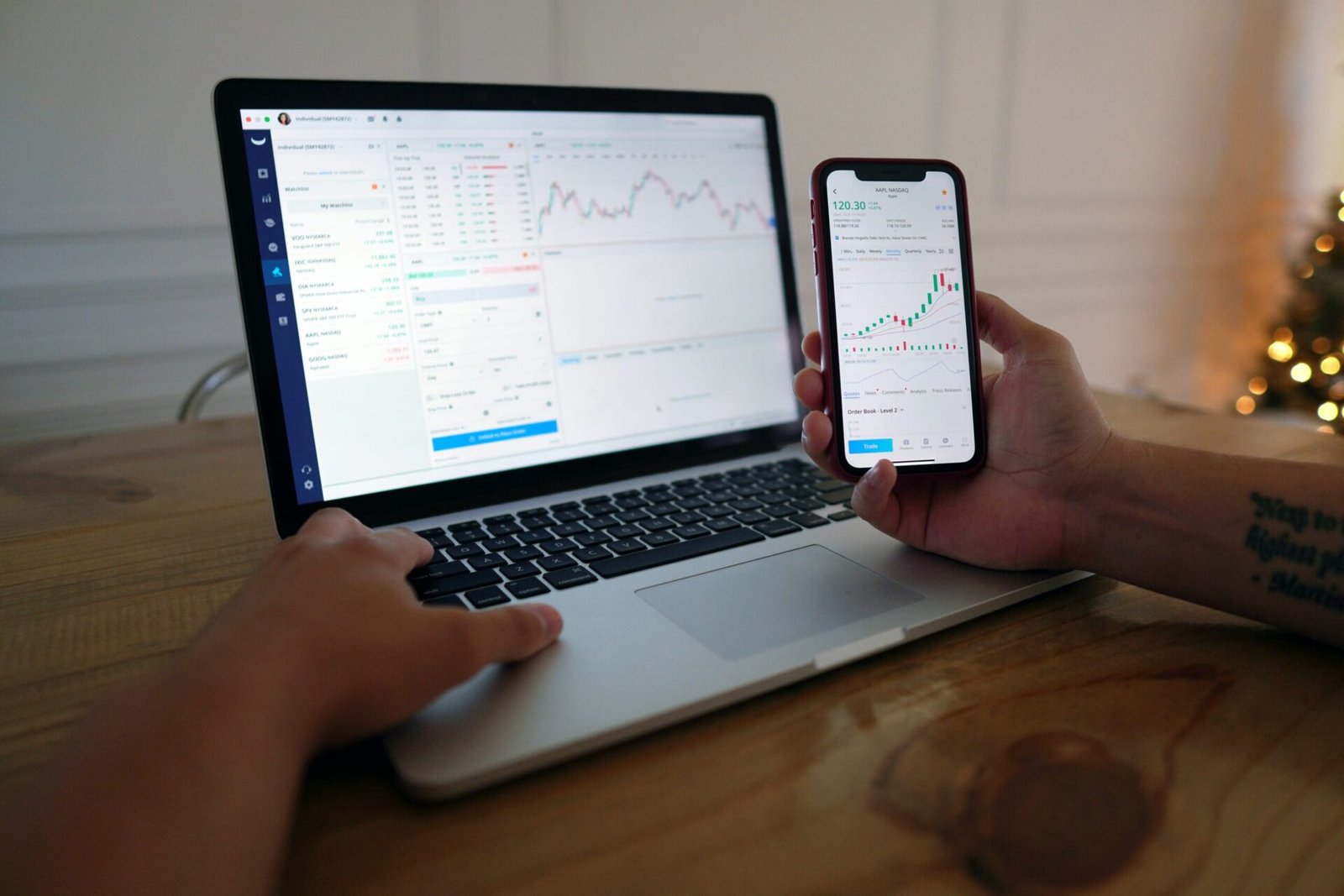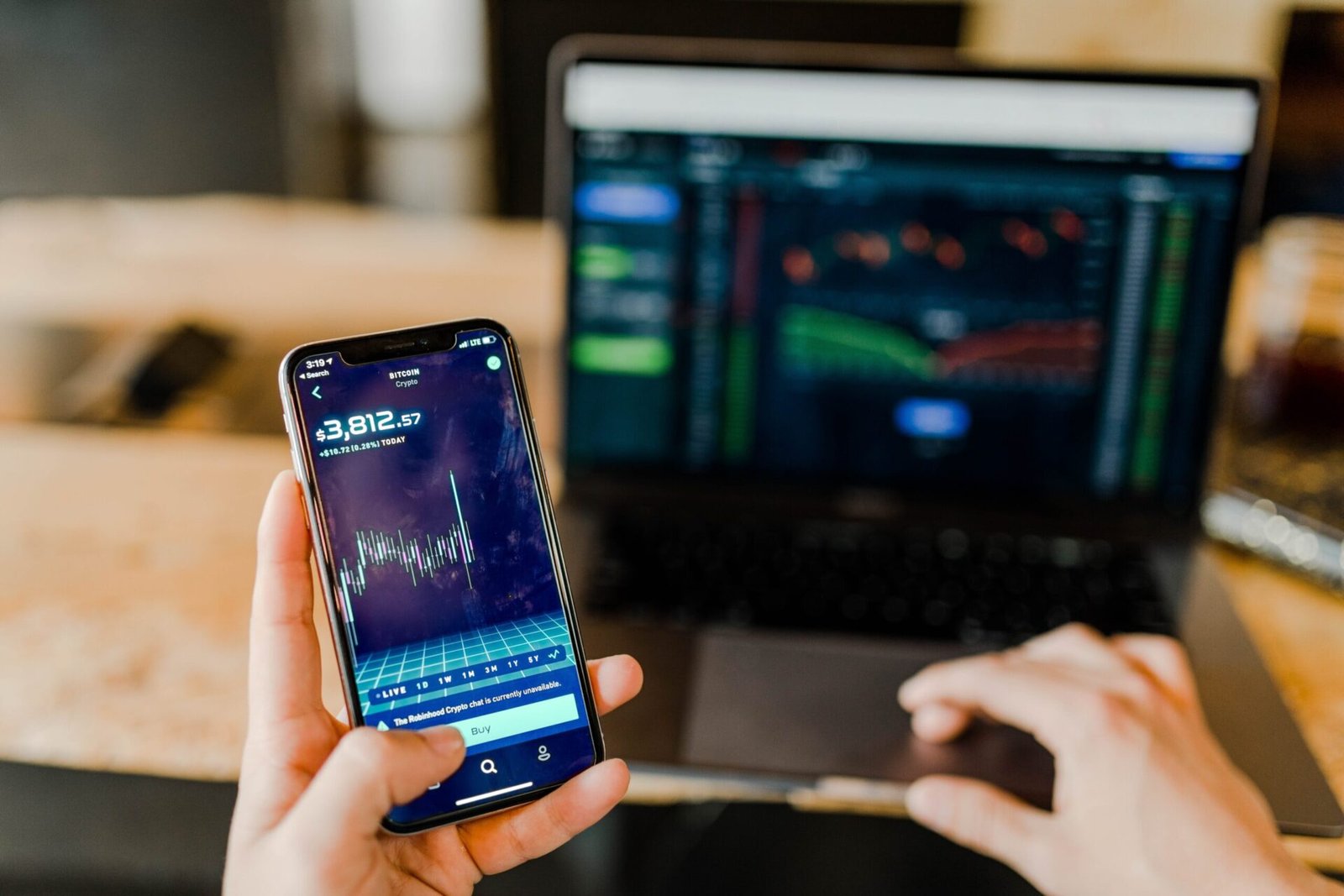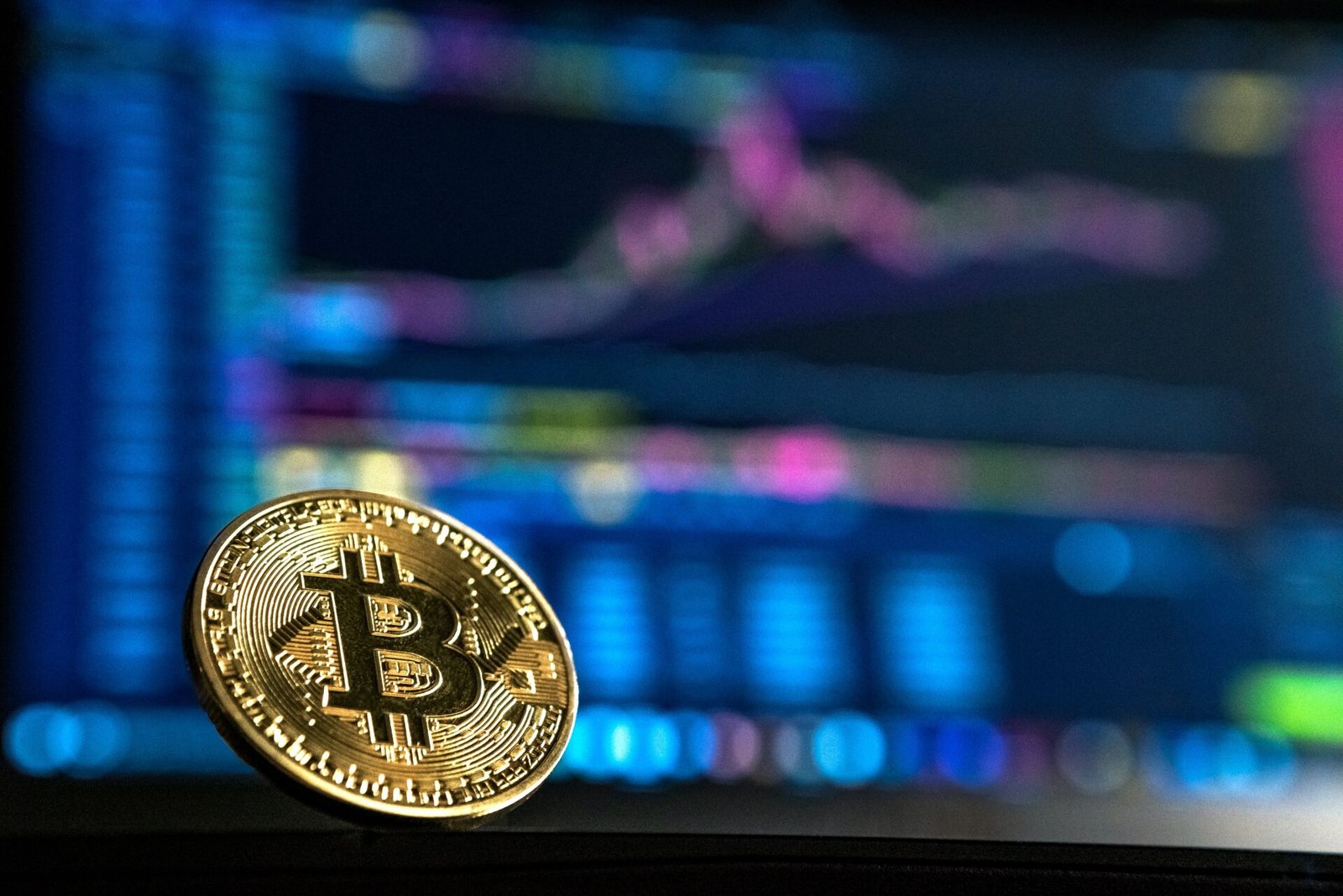Introduction
Trading futures on the stock market can be an exciting and potentially profitable venture. Futures are derivative contracts that allow traders to speculate on the future price movements of various assets, including stocks. In this blog post, we will guide you through the process of trading futures on the stock market, from understanding the basics to executing your first trade.
Before diving into the world of futures trading, it is important to have a clear understanding of what futures contracts are and how they work. A futures contract is an agreement between two parties to buy or sell a specific asset at a predetermined price and date in the future. These contracts are standardized and traded on regulated exchanges, such as the Chicago Mercantile Exchange (CME) or the New York Mercantile Exchange (NYMEX).
One of the key features of futures contracts is leverage. Unlike buying stocks outright, futures contracts allow traders to control a much larger position with a smaller amount of capital. This means that even small price movements in the underlying asset can result in significant profits or losses. However, it is important to note that leverage can amplify both gains and losses, so proper risk management is crucial when trading futures.
Another important aspect of futures trading is the concept of margin. When trading futures, traders are required to deposit a certain amount of money, known as margin, to cover potential losses. The margin requirement varies depending on the contract and the exchange, but it is typically a fraction of the total value of the contract. Margin serves as a form of collateral for the trade and helps to ensure that both parties fulfill their obligations.
When trading futures on the stock market, it is essential to have a solid understanding of the underlying asset. This includes conducting thorough research and analysis of the company’s financials, industry trends, and market conditions. Traders should also keep a close eye on news and events that may impact the stock’s price, such as earnings reports, regulatory changes, or geopolitical developments.
To execute a futures trade, traders can use a variety of tools and platforms. Many brokerage firms offer online trading platforms that allow traders to place orders, monitor their positions, and access real-time market data. These platforms often provide a range of advanced features, such as charting tools, technical indicators, and risk management tools, to help traders make informed decisions.
In conclusion, trading futures on the stock market can be a rewarding endeavor for those who are willing to put in the time and effort to understand the intricacies of the market. By familiarizing yourself with the basics of futures contracts, leveraging, margin requirements, and conducting thorough research, you can increase your chances of success in this exciting and dynamic market.
Understanding Futures
Before diving into the world of futures trading, it’s important to have a clear understanding of what futures are and how they work. Futures contracts are agreements to buy or sell a specific asset at a predetermined price on a future date.
Unlike stocks, which represent ownership in a company, futures are purely speculative instruments. They are traded on exchanges and are standardized in terms of contract size, expiration date, and delivery method.
When trading futures on the stock market, you are essentially making a bet on the future price direction of a stock or an index. If you believe that the price will rise, you can buy a futures contract, and if you believe that the price will fall, you can sell a futures contract.
Futures trading allows investors to participate in the price movements of various assets, including commodities, currencies, interest rates, and stock market indices. By trading futures, investors can take advantage of both rising and falling markets, as they can profit from both upward and downward price movements.
One of the key advantages of futures trading is leverage. With futures contracts, you only need to deposit a fraction of the total contract value, known as the margin requirement, to control a larger position. This allows traders to amplify their potential returns, but it also increases the risk of losses.
Another important aspect of futures trading is the concept of hedging. Hedging involves using futures contracts to offset potential losses in other investments. For example, if you own a portfolio of stocks and you are concerned about a market downturn, you can sell stock index futures to protect your portfolio from potential losses.
Futures trading also provides liquidity, as they are highly liquid instruments that can be bought and sold easily. This is because futures contracts are standardized and traded on organized exchanges, which provide a central marketplace for buyers and sellers to transact.
It’s worth noting that futures trading is not suitable for everyone. It requires a deep understanding of the market, risk management skills, and the ability to handle the potential volatility and leverage. Therefore, it’s important to educate yourself and seek professional advice before venturing into futures trading.
Choosing a Futures Broker
Before you can start trading futures on the stock market, you need to open an account with a futures broker. It’s important to choose a reputable broker that offers competitive fees, a user-friendly trading platform, and access to a wide range of futures contracts.
When selecting a futures broker, consider factors such as commission rates, margin requirements, customer support, and the availability of educational resources. It’s also worth checking if the broker is regulated by a recognized financial authority to ensure the safety of your funds.
Commission rates are an important consideration when choosing a futures broker. Different brokers have different fee structures, and it’s essential to understand how much you will be paying for each trade. Some brokers charge a flat fee per trade, while others have a tiered pricing structure based on the size of your trades. It’s important to calculate how much you will be paying in commissions based on your trading volume to ensure that it aligns with your trading strategy and profitability goals.
Margin requirements are another crucial factor to consider. Margin is the amount of money that you need to deposit with your broker to open a futures position. It acts as collateral and ensures that you have enough funds to cover any potential losses. Different futures contracts have different margin requirements, and brokers may have their own specific margin rules. It’s important to understand the margin requirements for the futures contracts you plan to trade and ensure that you have enough capital to meet those requirements.
Customer support is also an important consideration when choosing a futures broker. Trading futures can be complex, and having access to knowledgeable and responsive customer support can make a significant difference in your trading experience. Look for brokers that offer multiple channels of communication, such as phone, email, and live chat, and ensure that their support team is available during the hours you plan to trade.
Educational resources are another aspect to consider. Trading futures requires a solid understanding of the market and various trading strategies. Look for brokers that provide educational materials such as articles, tutorials, webinars, and even demo accounts to help you learn and improve your trading skills. Having access to educational resources can be invaluable, especially for new traders who are just starting in the futures market.
Regulation is a critical factor in ensuring the safety of your funds. It’s essential to choose a broker that is regulated by a recognized financial authority. Regulation provides oversight and ensures that brokers adhere to strict financial and ethical standards. Regulatory bodies such as the Securities and Exchange Commission (SEC) in the United States or the Financial Conduct Authority (FCA) in the United Kingdom monitor brokers to protect investors’ interests. Checking if a broker is regulated can give you peace of mind knowing that your funds are held in segregated accounts and that the broker operates with transparency and integrity.
In conclusion, choosing a futures broker is a crucial step in your trading journey. Consider factors such as commission rates, margin requirements, customer support, educational resources, and regulation when making your decision. Take the time to research and compare different brokers to find the one that best suits your trading needs and aligns with your financial goals.
Additionally, consider joining trading communities and forums where you can interact with experienced traders and gain insights from their experiences. Engaging in discussions and asking questions can help you deepen your understanding of futures trading and learn from the mistakes and successes of others.
Another important aspect of educating yourself is to practice trading in a simulated environment. Many brokerage firms offer demo accounts that allow you to trade with virtual money. This gives you the opportunity to test different strategies and techniques without risking real capital. Use this time to refine your trading plan and build confidence in your ability to execute trades effectively.
Furthermore, staying updated with market news and economic events is crucial for successful futures trading. Subscribe to financial news outlets and follow reputable analysts and economists who provide insights on market trends and potential trading opportunities. Understanding how global events can impact the markets will help you make more informed trading decisions.
Lastly, don’t underestimate the importance of self-discipline and emotional control in futures trading. Developing a trading routine and sticking to it can help you avoid impulsive and emotionally-driven decisions. Take the time to analyze your trades and learn from both your wins and losses. Keeping a trading journal can be helpful in identifying patterns and improving your overall performance.
Remember, education is an ongoing process in futures trading. The markets are constantly evolving, and it’s essential to stay updated and adapt your strategies accordingly. Continuously seek out new learning opportunities and stay committed to improving your skills. With dedication and a solid foundation of knowledge, you can increase your chances of success in futures trading.
Develop a Trading Plan
Before placing any trades, it’s crucial to develop a well-thought-out trading plan. A trading plan outlines your trading goals, risk tolerance, and the strategies you will use to enter and exit trades.
Defining your trading objectives is the first step in creating a comprehensive trading plan. Take the time to clearly identify what you want to achieve through your trading activities. Are you looking to generate consistent income, grow your capital, or hedge against other investments? Understanding your goals will help you tailor your trading strategies accordingly.
Once you have defined your objectives, it’s important to determine how much capital you are willing to risk on each trade. This will depend on your risk tolerance and financial situation. Setting realistic profit targets and stop-loss levels is also crucial in managing your risk effectively.
Another important consideration in developing your trading plan is the trading timeframe that suits your style. Are you a day trader, looking to take advantage of short-term price fluctuations? Or are you a swing trader, aiming to capture larger price movements over a few days or weeks? Alternatively, you may be a long-term investor, focusing on building a portfolio for the future. Each approach requires different strategies and risk management techniques.
Once you have defined your objectives, risk tolerance, and trading timeframe, it’s essential to document your trading plan. Write down your goals, strategies, and risk management rules in a clear and concise manner. This will serve as a guide and help you stay disciplined in your trading activities.
However, it’s important to note that a trading plan is not set in stone. As your trading skills improve and market conditions evolve, it’s crucial to regularly review and update your plan. The financial markets are dynamic, and what works today may not work tomorrow. By staying adaptable and continuously learning, you can refine your trading plan to stay ahead of the markets.
Practice with a Demo Account
Before risking real money, it’s advisable to practice trading futures on the stock market with a demo account. Most futures brokers offer demo accounts that allow you to trade with virtual funds in a simulated market environment.
Use the demo account to familiarize yourself with the trading platform, test your strategies, and gain confidence in your trading abilities. Monitor your performance and analyze your trades to identify areas for improvement.
Remember that trading in a simulated environment may differ from real trading, as emotions and slippage are not present. Nonetheless, demo trading can be a valuable learning tool for beginners.
When using a demo account, it is essential to treat it as if it were a real trading account. Set realistic goals and trade with the same discipline and risk management strategies that you would use with real money. This will help you develop good trading habits and prepare you for the challenges of live trading.
Another advantage of using a demo account is the ability to try out different trading strategies without any financial risk. You can experiment with various indicators, chart patterns, and timeframes to see what works best for you. This trial and error process can help you refine your trading approach and identify the strategies that are most effective for your trading style.
In addition to practicing your trading skills, a demo account can also help you become familiar with the different features and tools offered by the trading platform. You can explore the order types, market depth, and other functionalities without the fear of making costly mistakes.
Furthermore, demo accounts can be a valuable tool for testing new trading ideas or strategies. If you have developed a new approach or want to experiment with a different trading method, you can use the demo account to see how it performs in a simulated market environment.
Overall, a demo account is an excellent resource for traders of all levels. Beginners can use it to learn the basics of trading and gain confidence, while experienced traders can use it to refine their strategies and explore new possibilities. So, before you start trading futures with real money, take the time to practice and hone your skills with a demo account.
Execute Your First Trade
Once you have gained sufficient knowledge and practice, you are ready to execute your first trade in the futures market. Here are the steps to follow:
- Choose the futures contract you want to trade. Consider factors such as liquidity, volatility, and your familiarity with the underlying asset.
- Analyze the market using technical and/or fundamental analysis to identify potential trading opportunities.
- Determine your entry and exit points, as well as your profit target and stop-loss level.
- Place your order through your futures broker’s trading platform. Specify the contract, quantity, and order type (market order, limit order, or stop order).
- Monitor your trade and make any necessary adjustments based on market conditions.
- Once your trade reaches your profit target or stop-loss level, close the position to realize your gains or limit your losses.
It’s important to note that futures trading involves risks, and not all trades will be profitable. It’s essential to manage your risk by using appropriate position sizing, setting stop-loss orders, and diversifying your trades.
Now that you understand the basic steps involved in executing a trade in the futures market, let’s delve deeper into each step to ensure you have a comprehensive understanding of the process.
1. Choose the futures contract: When selecting a futures contract to trade, it’s crucial to consider factors such as liquidity, volatility, and your familiarity with the underlying asset. Liquidity refers to the ease with which you can enter and exit a trade without significant price slippage. Volatility, on the other hand, indicates the magnitude of price fluctuations in the market. It’s generally advisable to start with contracts that have higher liquidity and moderate volatility, as they offer better trading opportunities and lower risk.
2. Analyze the market: Before entering a trade, it’s essential to analyze the market to identify potential trading opportunities. Technical analysis involves studying price charts, patterns, and indicators to predict future price movements. Fundamental analysis, on the other hand, focuses on evaluating the underlying factors that drive the price of the asset, such as supply and demand dynamics, economic indicators, and geopolitical events. By combining both approaches, you can make more informed trading decisions.
3. Determine entry and exit points: Once you have identified a potential trading opportunity, you need to determine your entry and exit points. Your entry point is the price level at which you will initiate the trade, while the exit point is the price level at which you will close the position. Additionally, you should set a profit target, which is the price level at which you will take your profits, and a stop-loss level, which is the price level at which you will exit the trade to limit your losses. These levels should be based on your analysis and risk tolerance.
4. Place your order: After determining your trading parameters, you can place your order through your futures broker’s trading platform. You will need to specify the contract you want to trade, the quantity you wish to buy or sell, and the order type. A market order is executed at the best available price, while a limit order allows you to set a specific price at which you are willing to buy or sell. A stop order, on the other hand, is triggered when the market reaches a specified price level, helping you enter or exit a trade automatically.
5. Monitor your trade: Once your order is executed, it’s important to monitor your trade and make any necessary adjustments based on market conditions. This involves staying updated with relevant news and events that may impact the price of the futures contract. Additionally, you should keep an eye on technical indicators and price patterns to assess whether the trade is moving in your favor or if adjustments need to be made.
6. Close the position: Finally, when your trade reaches your profit target or stop-loss level, it’s time to close the position. By doing so, you can realize your gains or limit your losses. Closing a position involves executing an opposite trade to the one you initially entered, effectively neutralizing your exposure to the market. It’s important to note that emotions can play a significant role in closing trades, and it’s crucial to stick to your predetermined plan rather than succumbing to fear or greed.
By following these steps and continuously learning and adapting your trading strategies, you can develop the skills and discipline necessary to navigate the futures market successfully. Remember, trading involves risk, and it’s important to approach it with a well-thought-out plan and a commitment to risk management.
Continued Learning and Improvement
Successful futures trading requires continuous learning and improvement. Stay updated with market news and developments that can impact the prices of the assets you trade. This includes keeping track of economic indicators, geopolitical events, and industry-specific news that can influence the markets.
One way to enhance your trading skills is to keep a trading journal. This journal should record not only the details of each trade, such as entry and exit points, but also the rationale behind each trade. By documenting your thought process, you can identify any biases or mistakes that may have influenced your decision-making. Additionally, recording the outcome of each trade and any lessons learned allows you to reflect on your performance and make adjustments accordingly.
In addition to maintaining a trading journal, it is beneficial to regularly review your entries to identify patterns and areas for improvement. Look for recurring mistakes or missed opportunities and develop strategies to address them. This self-reflection process can help you refine your trading approach and enhance your overall performance.
Furthermore, consider joining trading communities or forums where you can interact with experienced traders and learn from their insights. Engaging in discussions with fellow traders can provide valuable perspectives and expose you to different trading strategies. These communities often offer a platform for sharing trade ideas and discussing market trends, allowing you to stay informed and expand your knowledge.
Another way to continue learning and improving is by attending webinars or workshops conducted by industry experts. These educational events often cover a wide range of topics, from technical analysis to risk management. By participating in such events, you can gain new insights, learn about the latest trading tools and techniques, and network with other traders.
In conclusion, successful futures trading requires a commitment to continuous learning and improvement. By staying updated with market news, maintaining a trading journal, engaging with trading communities, and attending educational events, you can enhance your skills and increase your chances of success in the dynamic world of futures trading.






Be First to Comment